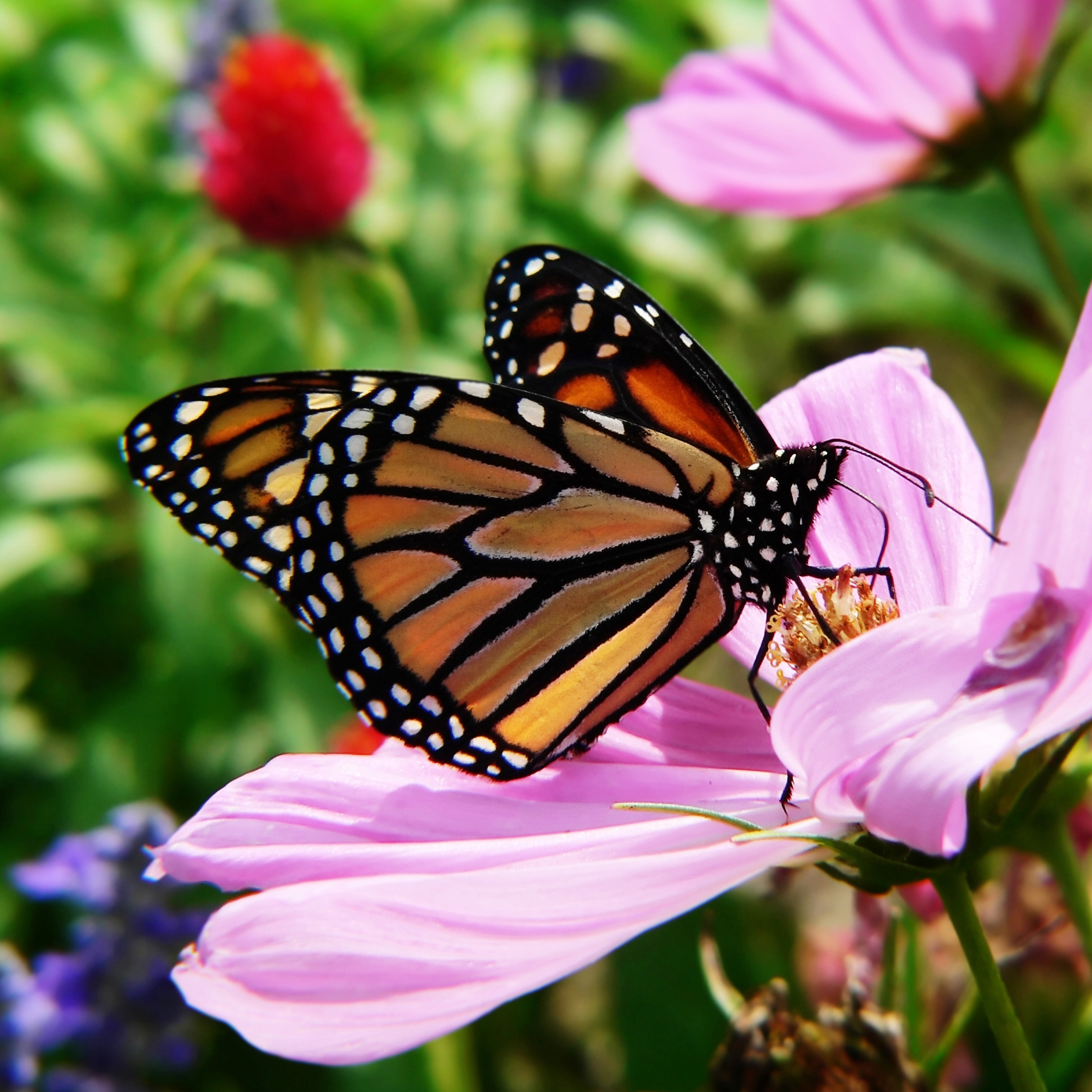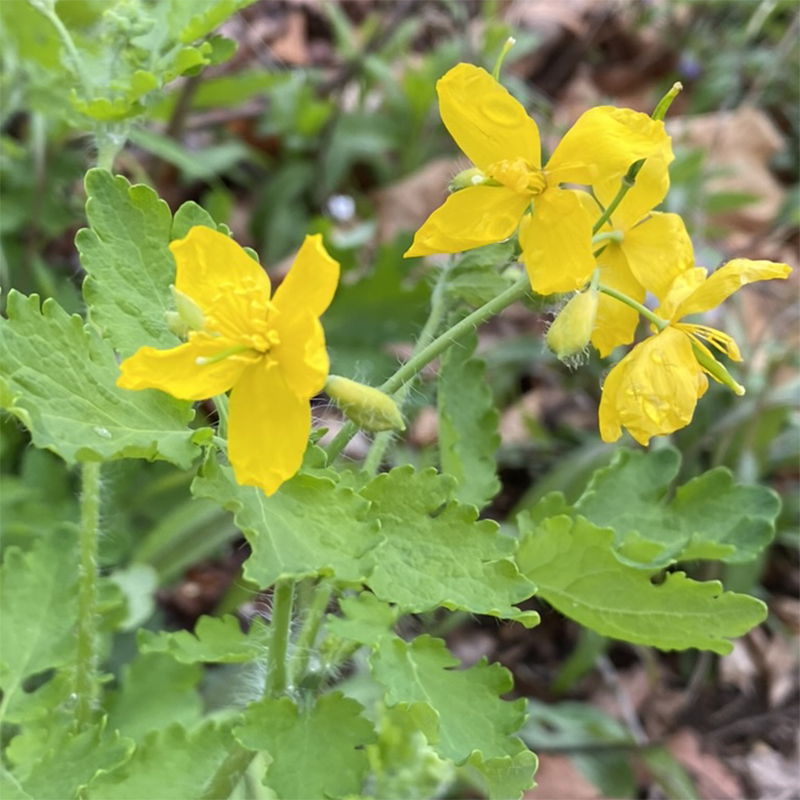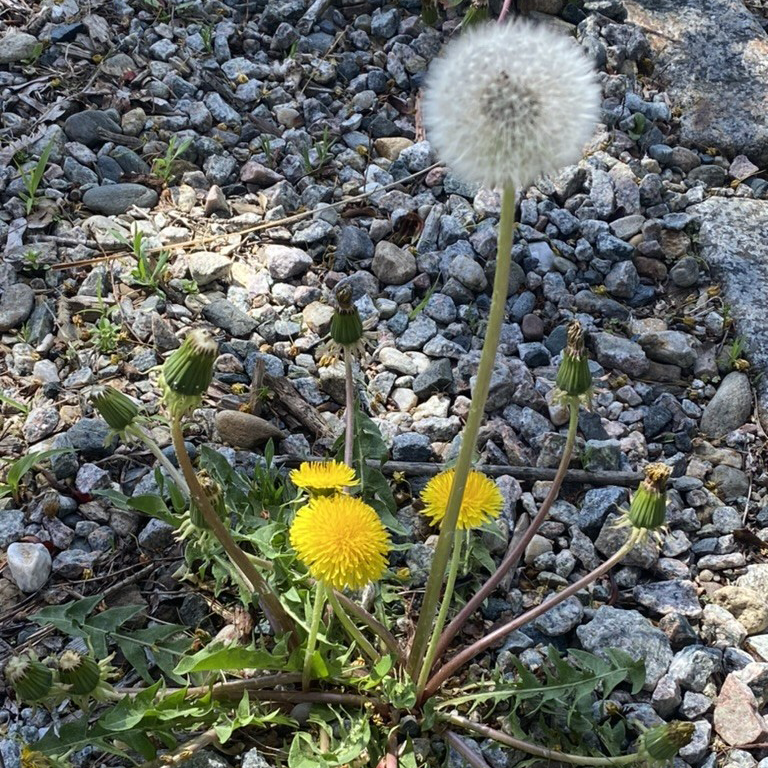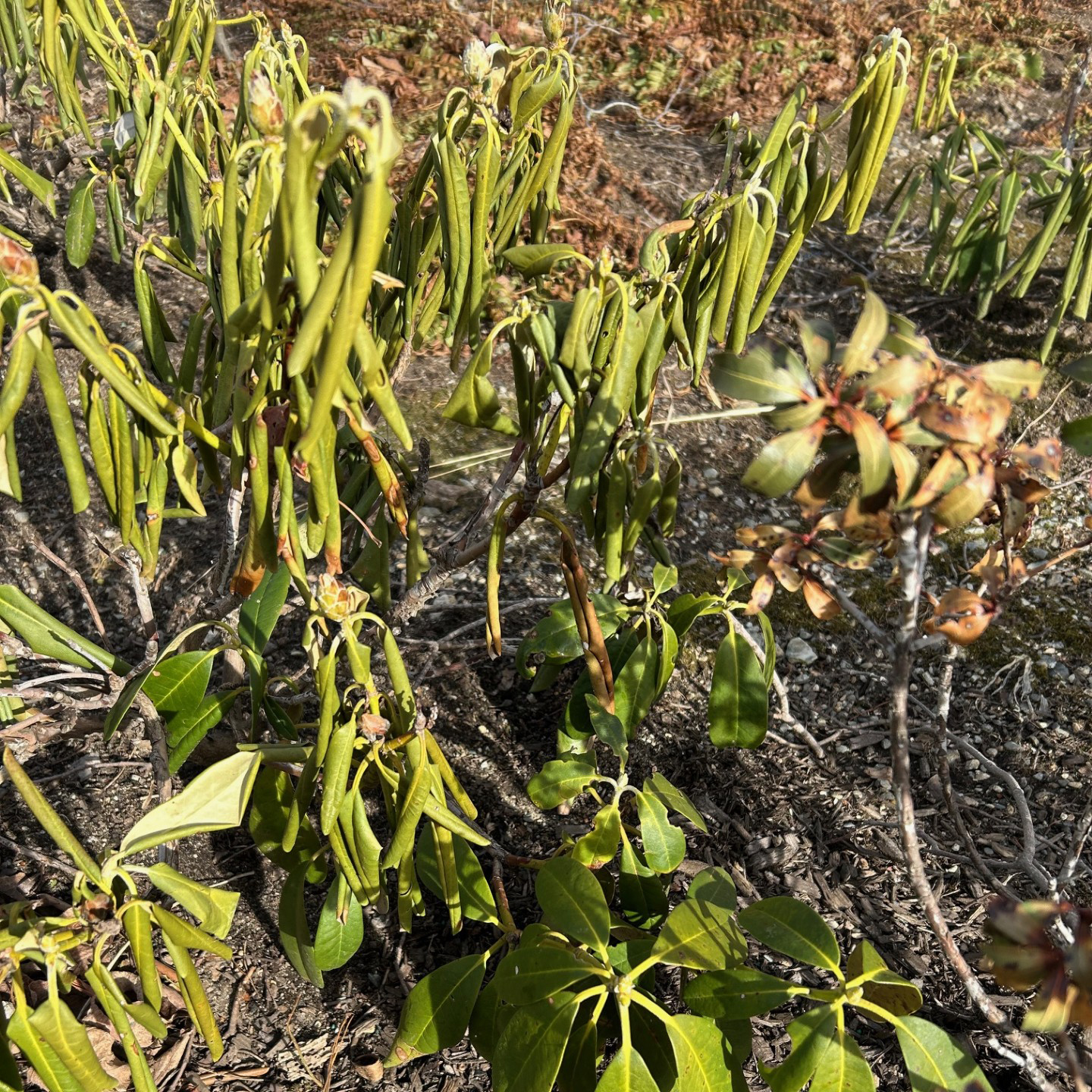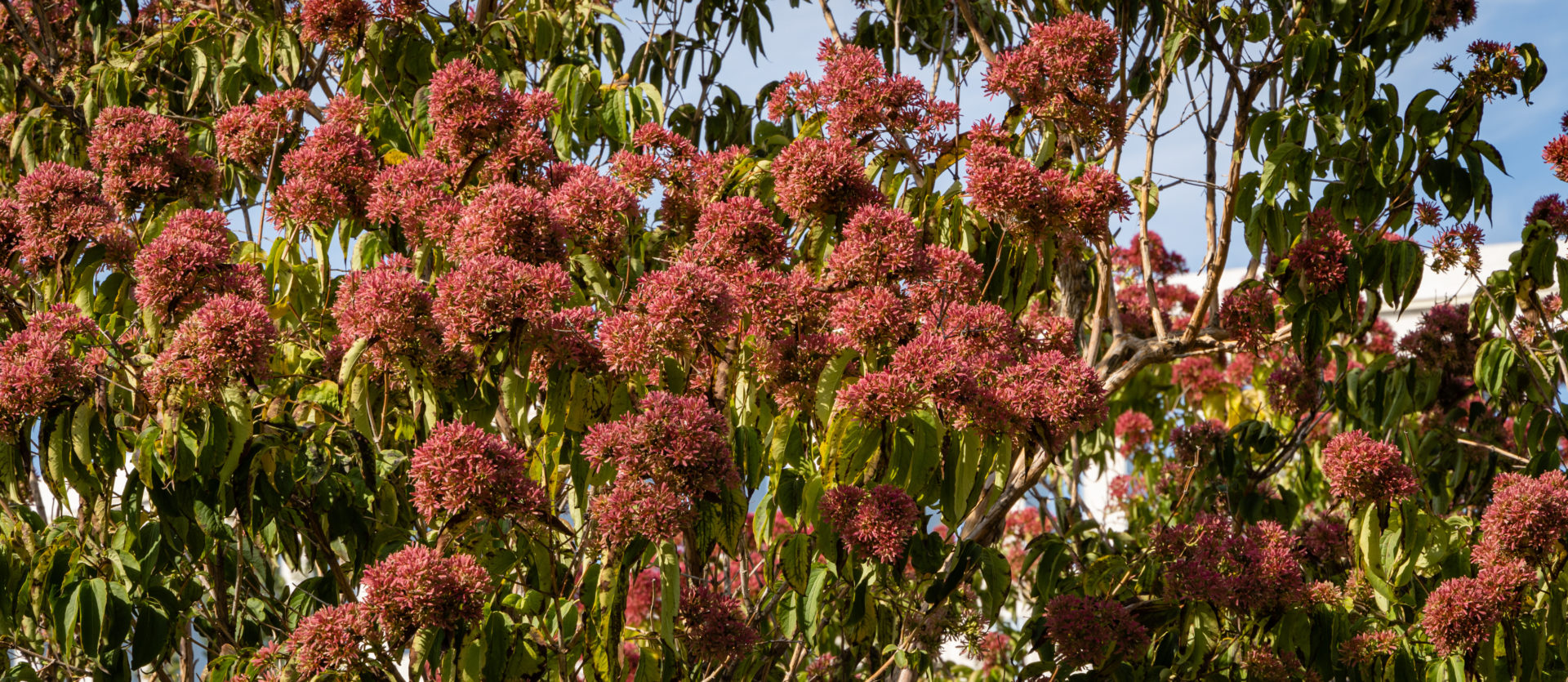
I want to introduce you to a tree that, when I first encountered it several years ago, I had to have one for my garden. Seven son flower is a large multi-stemmed shrub or small tree that definitely deserves to be better known. With late season, long-lasting flowers and wonderful exfoliating bark, it is an eye-catching plant in September.
Its introduction to cultivation in the U.S. is really recent. Originally discovered by E.H. Wilson on a plant collecting trip to China in 1907, it wasn’t actually given its botanical name until 1916. Both its common and botanical names reference the structure of its flowers. These flowers appear in a circle of six surrounding a central bud, which may flower or alternatively go on to produce a further six flowers encircling another bud. However, to the casual eye, this plant appears to have clusters of seven flowers, hence its name.
Despite its original discovery in 1907, it wasn’t until a Sino-American botanical expedition in 1980 that cuttings and seeds were brought back to Arnold Arboretum, which dispersed the plant material among various horticultural organizations for propagation. Always rare in the wild, the seven son flower is considered endangered in its natural habitat and is protected by the Chinese government.
Fortunately for gardeners, seven son flower has proven to be an easy tree to grow, and offers a number of qualities that make it a tree with multi-season interest. It is capable of reaching 30’ tall, although it is more likely to reach a maximum of 20’ tall and 15’ wide, and multi-stemmed specimens remain shorter at around 15’. Preferring full sun, it can take some shade and is not fussy about soil conditions. While not noted for drought tolerance, the established tree in my yard has held up well this summer and has not needed supplemental water. It is rated hardy to Zone 5, so within Massachusetts it is winter hardy, but anecdotally it appears to have greater cold tolerance.
It leafs out in May, and for most of the summer, it is these large green leaves with prominent veins that make a quiet statement as other trees and plants steal the show. However, come September, seven son flower comes into its own as its buds break open to reveal clusters of tiny white, highly scented flowers which attract masses of bees and other pollinators. And if this is not enough, once the white petals fade and fall, the remaining seeds and surrounding sepals take on the appearance of a second blooming of rosy red. Seasonal interest does not end with the arrival of winter though. The bark of this tree is an attractive light brown and peels in long strips which have a pale, whitish hue.
In recent years this tree has attracted the attention of plant breeders, resulting in the cultivar Temple of Bloom®. This has all the same great qualities of the species in a more compact and tidy form, as it reaches just 10’ tall and wide.
Winner of several horticultural awards including the Cary Award, which recognizes under-utilized woody plants of horticultural merit that are particularly adapted to the New England climate, this attractive tree with its multi-seasonal interest easily earns its place in gardens. Don’t take my word for it though, come and visit our garden centers to see for yourself as this fabulous plant will soon be in full bloom!
Sources:
Arnold Arboretum – https://arboretum.harvard.edu/plant-bios/seven-son-flower/
International Dendrology Society – https://www.dendrology.org/publications/tree-of-the-year/heptacodium-miconioides-2012/
Mount Auburn Cemetery – https://mountauburn.org/heptacodiummiconioides/
Missouri Botanic Garden – https://www.missouribotanicalgarden.org/PlantFinder/PlantFinderDetails.aspx?kempercode=k450


